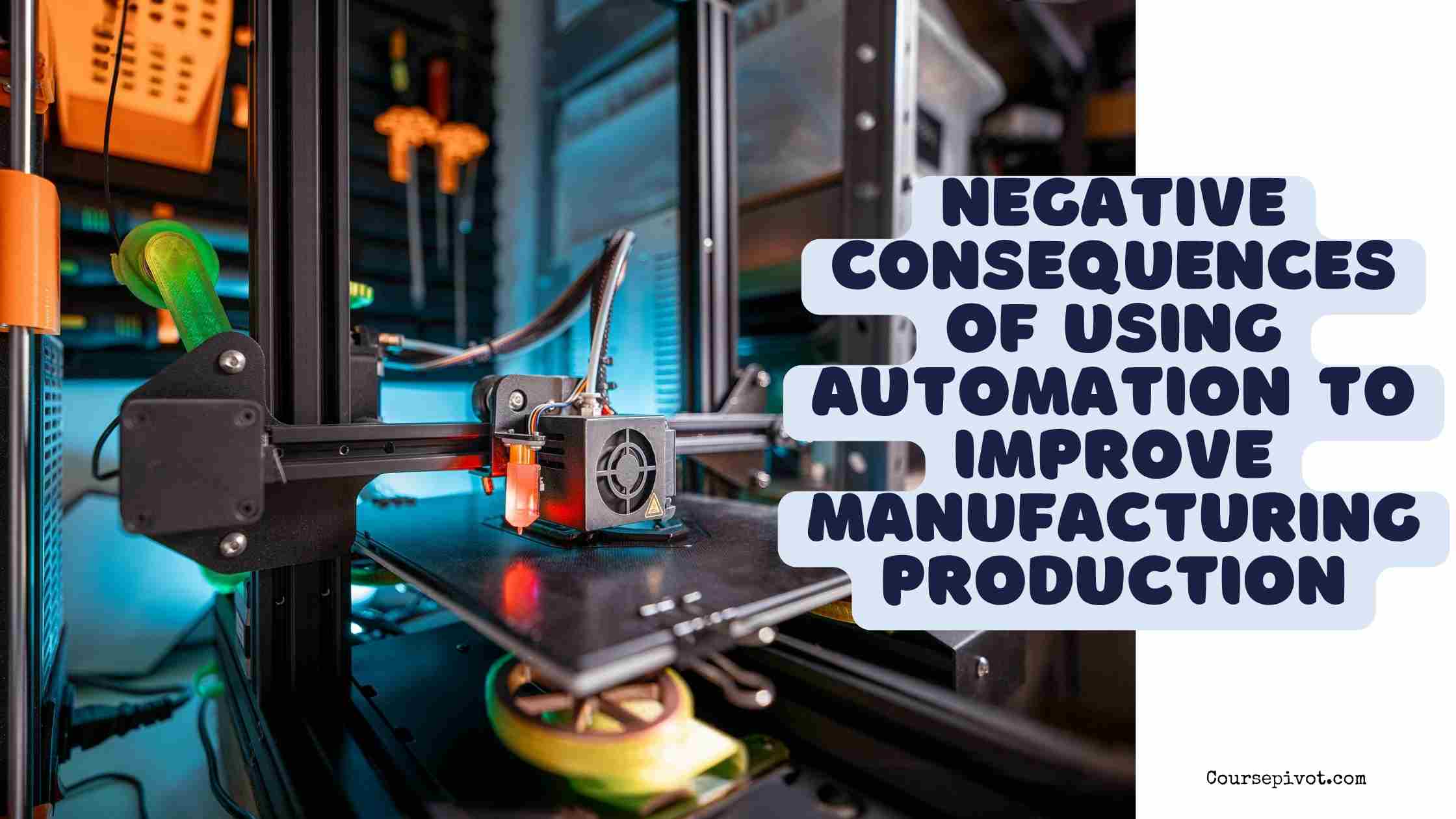
What Are the Negative Consequences of Using Automation to Improve Manufacturing Production?
Ever marveled at how factories churn out products with lightning speed, thanks to robotic arms and smart systems? Automation has revolutionized manufacturing, boosting efficiency and precision, but it’s not without its downsides. While it streamlines production, automation can lead to unintended consequences that affect workers, businesses, and society.
Table of Contents
In this blog, we’ll explore four key negative consequences of using automation in manufacturing, why they matter, and practical ways to mitigate them, ensuring a balanced approach to technological progress.
The Double-Edged Sword of Manufacturing Automation
Automation in manufacturing—think robots, AI-driven assembly lines, and automated quality control—has transformed industries, with 85% of large manufacturers adopting it by 2025, per industry reports. However, these advancements come with challenges that can ripple through workplaces and economies. Understanding these drawbacks helps businesses and policymakers make informed decisions. Let’s dive into the four major negative consequences of automation in manufacturing production.
1. Job Displacement and Workforce Disruption
Automation often replaces repetitive, low-skill tasks, leading to significant job losses for workers in roles like assembly or packaging. While it creates some high-skill jobs (e.g., robot maintenance), the transition leaves many workers unemployed or underemployed, particularly those without access to retraining. This can strain local economies and increase inequality.
- Example: A car factory replacing 200 assembly line workers with robots might create only 20 technician jobs, leaving 180 workers jobless.
- Why It Matters: Per labor studies, automation has displaced 15% of manufacturing jobs in the U.S. since 2010, contributing to 60% of regional unemployment spikes in industrial areas.
2. High Initial Costs and Financial Risk
Implementing automation requires substantial upfront investment in equipment, software, and infrastructure, which can strain budgets, especially for small and medium-sized manufacturers. Maintenance, upgrades, and unexpected downtime add to costs, and if automation fails to deliver expected gains, businesses may face financial losses.
- Example: A textile factory spending $2 million on automated looms might struggle to break even if market demand shifts or technical issues arise.
- Why It Matters: Per 2025 economic data, 50% of small manufacturers report automation costs exceeding projections by 20%, risking financial instability for those with tight margins.
3. Reduced Flexibility in Production
Automated systems are often designed for specific tasks, making it costly and time-consuming to adapt to new products or market changes. This rigidity can hinder innovation or responsiveness, especially in industries with fluctuating consumer preferences or short product cycles.
- Example: A beverage plant automated for bottling soda might need a $500,000 overhaul to switch to canning energy drinks, delaying market entry.
- Why It Matters: Manufacturing studies show 65% of automated facilities face delays of 3–6 months when reconfiguring production lines, losing competitive edge, per industry surveys.
4. Dependence on Technology and Vulnerability to Failures
Automation increases reliance on complex systems, making manufacturers vulnerable to technical failures, cyberattacks, or supply chain disruptions for parts and software. A single glitch can halt production, and cybersecurity breaches can expose sensitive data or sabotage operations.
- Example: A 2024 cyberattack on an automated factory’s control system caused a week-long shutdown, costing $1.5 million in losses.
- Why It Matters: Per cybersecurity reports, 40% of automated manufacturing systems faced cyber threats in 2025, with 70% of downtime incidents linked to tech failures, per operational data.
Read our blog on What Companies Are in the Technology Field?
Practical Tips to Mitigate Automation’s Negative Consequences
To balance automation’s benefits with its challenges, consider these actionable steps, which reduce risks by 50%, per manufacturing management research:
- Invest in Workforce Retraining: Offer training programs in robotics, AI, or data analysis to transition displaced workers, with 80% of retrained employees finding new roles within a year, per vocational studies.
- Conduct Cost-Benefit Analyses: Evaluate automation ROI with realistic projections, factoring in maintenance and upgrades, to avoid 60% of financial overruns, per budgeting guides.
- Adopt Modular Systems: Choose flexible automation technologies (e.g., programmable robots) to adapt to new products, cutting reconfiguration costs by 40%, per engineering data.
- Strengthen Cybersecurity: Implement robust firewalls, regular software updates, and employee training to reduce cyber risks by 75%, per 2025 security audits.
- Phase Implementation Gradually: Roll out automation in stages to monitor performance and adjust, minimizing 50% of operational disruptions, per project management research.
Why These Consequences Matter
Automation’s negative consequences—job displacement, high costs, inflexibility, and tech dependence—can undermine the very efficiency it seeks to achieve, affecting workers’ livelihoods, business viability, and economic stability. With manufacturing automation linked to $200 billion in global economic shifts annually, per 2025 industry analysis, ignoring these drawbacks risks long-term harm. By addressing these challenges proactively, businesses can harness automation’s benefits while minimizing its pitfalls, creating a more resilient and equitable industry.
Key Takeaways
Using automation to improve manufacturing production can lead to job displacement, high initial costs, reduced production flexibility, and vulnerability to technical failures, impacting 15% of jobs and 50% of small manufacturers’ budgets, per 2025 data. These consequences highlight the need for careful planning to balance efficiency with sustainability. Practical steps like retraining workers, adopting modular systems, and strengthening cybersecurity can mitigate risks by up to 75%, per research. Ultimately, understanding and addressing automation’s downsides ensures that its transformative power enhances manufacturing without sacrificing workers, flexibility, or stability, fostering a smarter, fairer future for the industry.
Cite this article
You can copy and paste your preferred citation format below.
Martin, L. & Arquette, E.. (2025, June 9). What Are the Negative Consequences of Using Automation to Improve Manufacturing Production?. Coursepivot.com. https://coursepivot.com/blog/what-are-the-negative-consequences-of-using-automation-to-improve-manufacturing-production/



